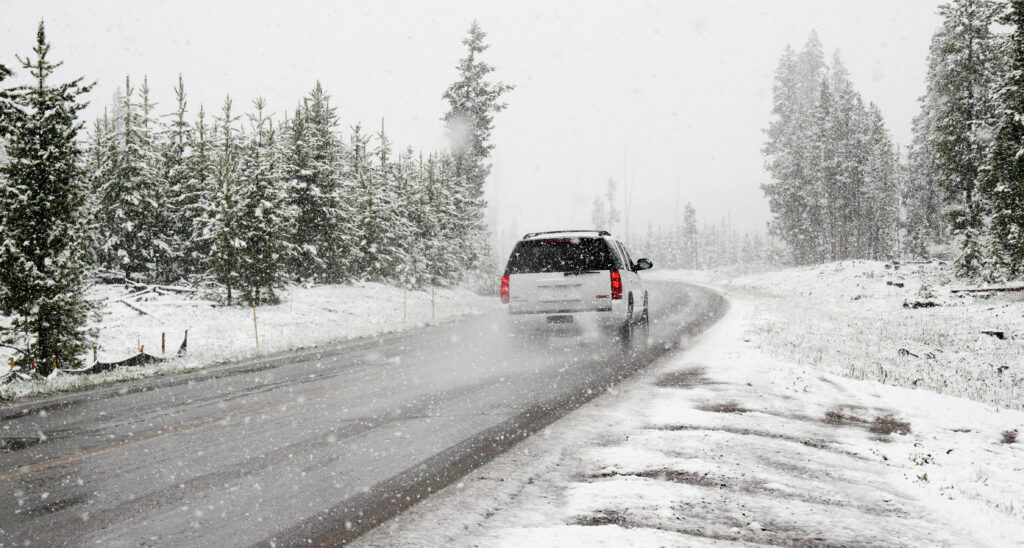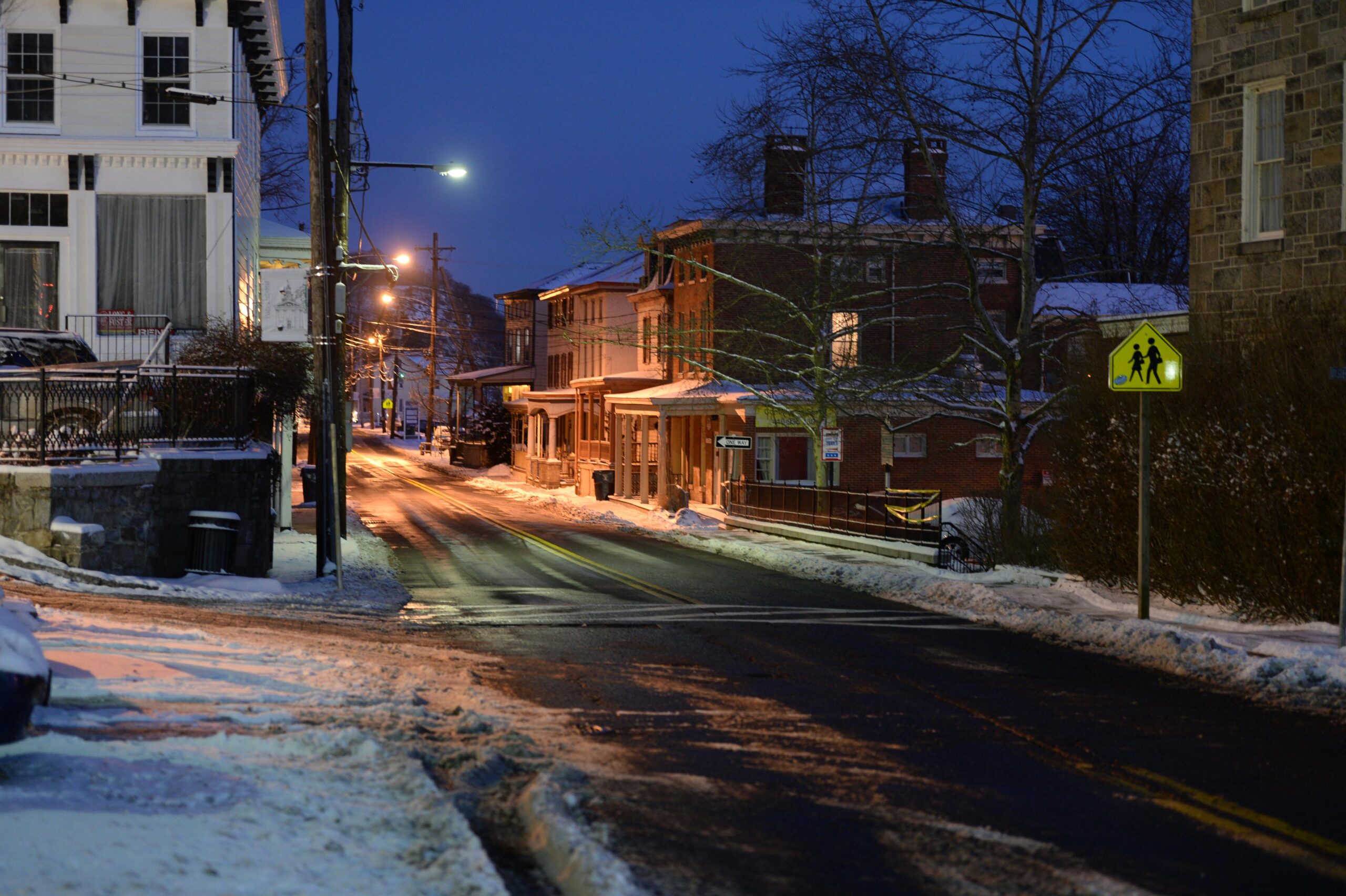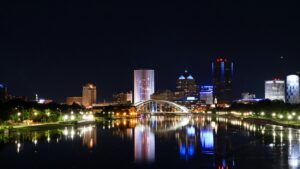Because freezing temps shouldn’t mean a freezing floor project.
Winter-Proof Floors That Don’t Flinch When It’s Cold
Winter has a way of testing everything: your patience, your car battery, and especially your concrete floors.
Did you know that many concrete floor coatings can’t hold up to extreme cold and heat? Not only do they fail over time, but they also can be challenging to apply. Anyone who’s ever tried applying epoxy in cold weather knows the struggle. It’s slow to cure, it blisters, and sometimes it never fully hardens.
Polyaspartic coatings, on the other hand, couldn’t care less about the temperature. They cure quickly, flex naturally with your concrete in hot and cold, and laugh in the face of salt, slush, and snow.
Let’s unpack why this newer coating formula outperforms epoxy and other older concrete coating types in freezing conditions, and why we swear by it as the best concrete coating for garages, shops, and basements near you.
The Cold-Weather Problem With Traditional Coatings
Traditional epoxy looks great on paper…until the thermometer drops.
That’s for two reasons: 1) it doesn’t cure well; and 2) it’s so rigid, freezing concrete can actually cause it to crack.
Epoxy is a two-part resin system made up of a base resin and a hardener that chemically bond to form a rigid, plastic-like surface. It’s really durable, but it has its problems.
First, below 55°F, epoxy starts acting up. The curing and drying process slows down to a crawl, the finish turns cloudy, and adhesion weakens. It isn’t great to install on cold days.
The second issue is simple: epoxy hardens into a rigid shell that doesn’t flex when your concrete expands or contracts.
That lack of movement is what kills epoxy in cold climates. A coating that can’t bend will eventually break. Concrete itself naturally moves more than most people realize—it subtly expands on hot summer afternoons and contracts when the temperature drops at night or during winter cold snaps. Those shifts might only be fractions of an inch, but over time they add up, and a rigid coating that can’t flex will start to separate, peel, or crack.
Polyaspartic Coatings Stay Flexible and Strong
This is where polyaspartic coatings completely change the game. They’re engineered with flexibility built right in.
As temperatures swing, your concrete slab expands during the day and contracts overnight. A polyaspartic floor moves with it, stretching slightly instead of snapping apart.
That elasticity is a huge advantage in cold-weather states. It keeps the bond tight and prevents chipping, peeling, and spider cracks, even after dozens of freeze-thaw cycles.
The result? A surface that stays smooth, clean, and solid year after year.
Why Polyaspartic Coatings Work So Well in the Cold
- Fast cure times: They set in a fraction of the time—sometimes within an hour—even when temperatures dip to -20°F.
- Superior adhesion: The formula chemically fuses with your concrete, creating a grip that doesn’t quit.
- High flexibility: Instead of fighting temperature changes, it flexes with them.
- All-season installation: Heated or unheated, we can apply it anytime, anywhere, all year long.
Epoxy’s Other Weak Spot: UV Yellowing
Epoxy coatings might start out glossy, but they don’t hold that look forever.
Over time, exposure to sunlight and UV rays causes them to yellow or amber. It’s especially noticeable in garages or entryways where sunlight hits the floor regularly. That discoloration doesn’t affect performance much at first, but it does make the floor look dated and uneven.
Polyaspartic coatings, by contrast, have built-in UV stability. They stay crystal clear and keep their color, even after years of exposure.

The Best Concrete Coating for Cold Climates: Built to Handle Winter’s Worst
If you’ve ever seen what road salt, ice melt, and snow tires do to a floor, you know winter is unforgiving.
Polyaspartic coatings form a tough, non-porous barrier that keeps moisture and chemicals out where they belong.
No more white salt haze, no rust spots, no bubbling or flaking. Just a clean, glossy floor that still looks brand new come spring.
Why We Pair Polyurea and Polyaspartic for Maximum Durability
At Everlast Concrete Coatings, we don’t rely on one product to do it all. Our concrete coating systems start with a polyurea basecoat—known for its incredible bond strength—and finishes with a polyaspartic topcoat for flexibility, UV resistance, and long-lasting shine.
It’s the same tough combo used in airplane hangars and industrial warehouses, customized for your garage or basement floor.
Winter-Ready Floors, Installed Any Time of Year
You don’t have to wait for warm weather to get a durable, great-looking floor. Our crew installs polyaspartic coatings in as little as one day, even in cold conditions. By the time epoxy would’ve just started curing, you’ll already be parking your car on a flawless new surface.
Ready for a floor that doesn’t fear the freeze?
Get a free concrete coating estimate from Everlast Concrete Coatings for a free quote today and find out why homeowners near you trust our team for floors that last through every season.





